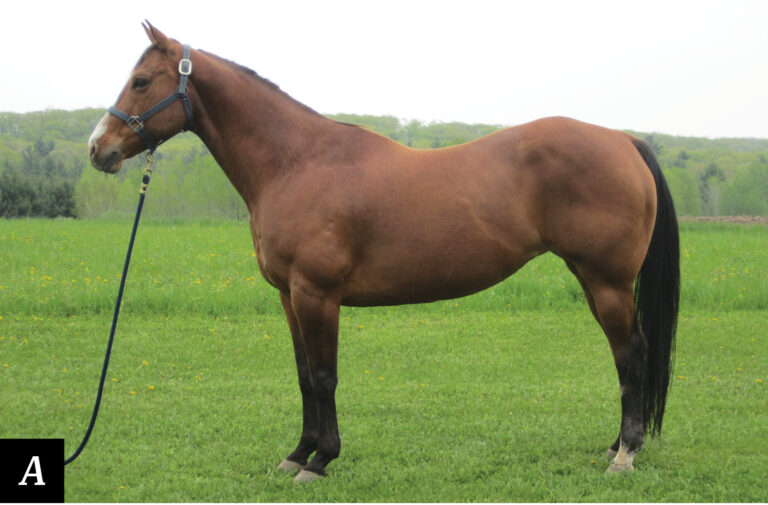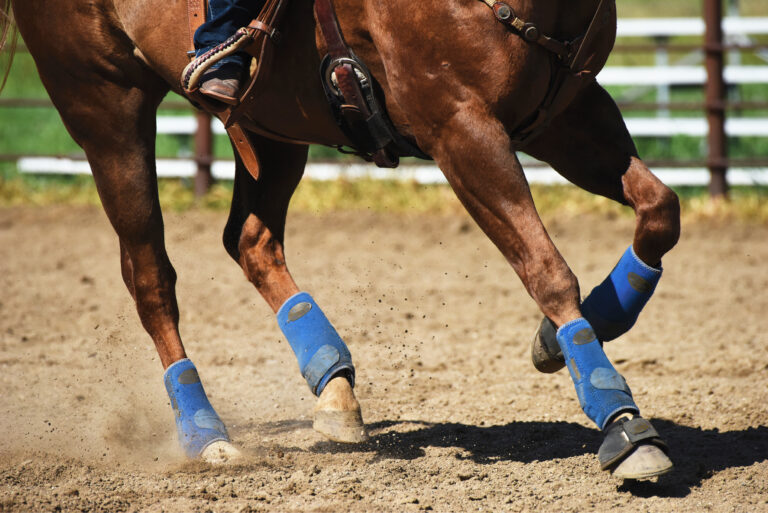Q: Why do some horses carry their tails to one side? Can a chiropractic adjustment straighten a tail that hangs crooked? If not, is there anything else that can be done to correct a lopsided tail carriage?
-Jan Guelff, Montana

A: A horse may carry his tail to one side for a number of reasons. Some can be improved or corrected, and some can’t, but you first need to determine why a horse’s tail carriage is crooked. Here, we’ll take a look at the most likely causes of crooked tail carriage, and whether there’s a treatment that will help.
[READ: Alternative Equine Therapies]
Genetics. In some breeds, a lopsided tail carriage is inherited. A number of Arabian horses carry their tails consistently to one side. With these horses, the tail is usually off to one side whether the horse is standing still or moving. If an Arabian has carried his tail to one side since birth, chances are, it can’t be corrected.
Tail altering. Tail altering procedures, such as cutting or blocking, can also cause permanently crooked tails. These practices are highly controversial, but still common in some breeds and disciplines where a specific tail carriage is desirable for competition. (For more information, see A Tail of Woe, January ’08.)
Nerve cutting or blocking procedures can cause permanent nerve and muscle damage, resulting in a tail that’s carried to one side, often accompanied by gross deformities of the muscles above the tail head. Once this occurs, a crooked tail can’t be corrected.
Tail injury or trauma. Trauma to the tail can also make it crooked—especially if there’s a fracture in one of the small bones that make up its length. If the bone doesn’t heal in a straight line, the tail will permanently remain crooked.
It’s also possible for small bones to become dislocated or misaligned. In this case, the tail is crooked at the injury’s location, rather than at the tail head where most crooked tails veer off course. At first, a broken or dislocated tail will be painful and may be accompanied by a loss of tail tone (the tail feels floppier due to nerve damage). Once a fracture or dislocation is healed and set in place, however, it’s unlikely to cause pain. But your horse will have a permanent bend in his tail where the injury occurred.
Unfortunately, not much can be done to straighten a tail that’s crooked due to injury—even if it’s detected when it first happens. Efforts to immobilize the tail to keep it straight aren’t likely to be successful. A tail’s structure and activity make it difficult to keep a functional brace or bandage in place.
Lameness. Finally, your horse may carry his tail to one side due to hind-limb lameness. Most often, horses will carry their tails to the side of the sound leg, but in some cases, a horse will carry his tail toward the lame leg.
If the lameness is severe, your horse’s tail might remain crooked even when he’s standing still. But in typical cases of lameness, your horse will only carry his tail off to one side when he’s moving. This is one situation where a crooked tail carriage can be corrected if the cause of the lameness can be determined and successfully treated. If you suspect this may be the cause, schedule an appointment with your veterinarian for a lameness exam.
Crooked tail carriage isn’t likely due to a spinal misalignment. In fact, if a horse is very asymmetrical or “crooked” through his body, his entire hindquarters would likely shift to one side rather than only his tail—and chiropractic treatments probably wouldn’t straighten his tail.
However, if hind-limb pain or discomfort is a crooked tail’s root cause, chiropractic manipulation may alleviate pain and result in a straighter tail carriage. It wouldn’t hurt to schedule a chiropractic session for your horse with a well-qualified equine chiropractor.




